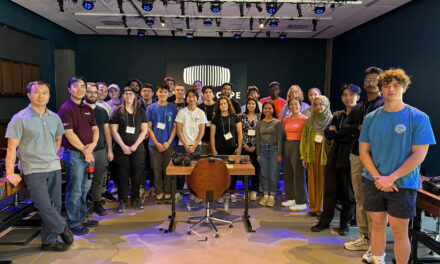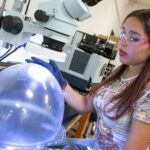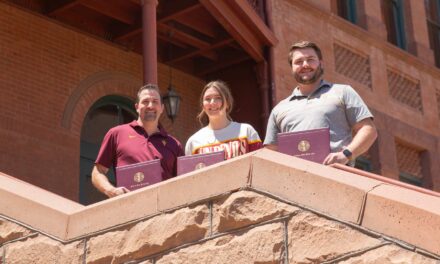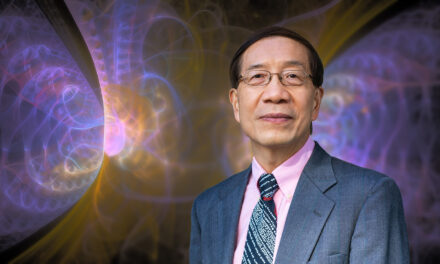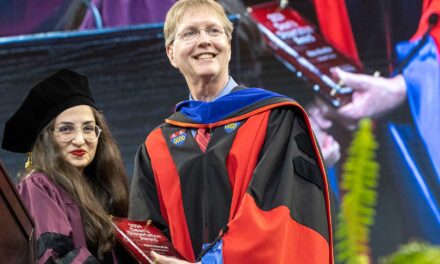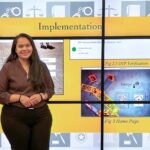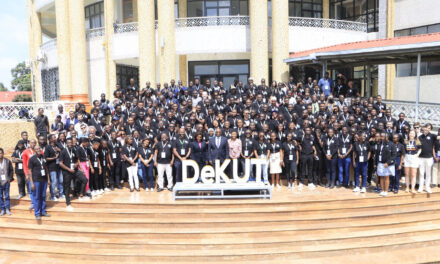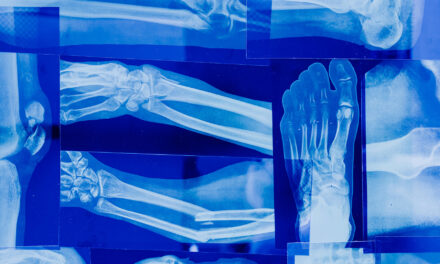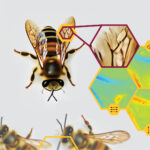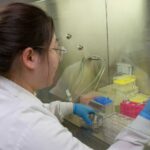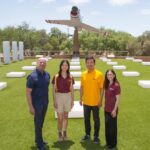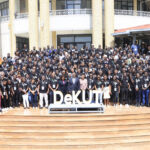
A closer look at materials science
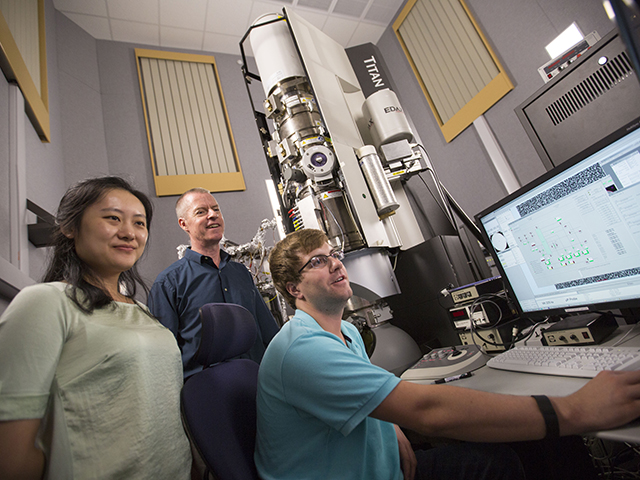

Peter Crozier, an associate professor of materials science and engineering, uses transmission electron microscopy to investigate the fundamental properties and structure of a given material. Crozier, along with doctoral students Qianlang Lui, left, and Ethan Lawrence, center, use this process to beam electrons through an ultra-thin sample to observe an image of the atoms in the material for analysis. Photographer: Jessica Hochreiter/ASU
“Understanding stuff” could be a broad phrase to describe what many scientists and researchers do, but Peter Crozier takes the art of understanding to another level — specifically, the atomic level.
He specializes in materials characterization: analyzing the fundamental properties and structure of a given material.
To investigate these fundamental properties Crozier, an associate professor of materials science and engineering at Arizona State University, uses transmission electron microscopy (TEM). This process beams electrons through an ultra-thin sample and observes the material’s interaction with the particles, which can produce an image of the atoms in the sample. The image can be magnified and focused, providing a close-up look at the sample’s atomic structure.
“TEM gives you a high-resolution image of a structure, right down to the atoms,” says Crozier, who heads the Electron Microscopy for Energy and the Environment Group. “It allows us to figure out not only the atomic structure, but what happens when you put two different materials together and observe how they interact.”
But traditional TEM cannot observe all interactions. It’s a delicate process, requiring the length of the microscope to be vacuum-sealed, as any environmental effects — temperature, gases — can disrupt the imaging. This means materials must be viewed in an isolated state.
“That’s not particularly helpful when you want to truly characterize a working material,” says Crozier. “We don’t want to just look at the static state of a structure, but the dynamic fluctuation in the structure.”
To achieve this, Crozier uses in situ TEM, which makes use of a miniature, curated environment that allows researchers to look at a material in its working state, affected by the forces surrounding it. Most of the microscope remains vacuum-sealed so electrons can pass through easily, and the simulated environment is created using reaction cells, which are thin layers on either side of the sample that won’t interfere with the electron imaging.
“Viewing the results of the sample in this way is called in situ characterization, allowing us to measure the stimuli as well as the change in the material,” says Crozier.
But even with a vacuum-sealed microscope, TEM remains a sensitive process. The devices housed at ASU’s LeRoy Eyring Center For Solid State Science all reside in climate-controlled, acoustic-dampened rooms. The entire building itself acts as a Faraday cage, meaning it screens out electromagnetic and electrostatic interference. When the Phoenix Valley Metro Light Rail was under construction, the initial route was altered to steer clear of the facility, as the electromagnetism would have disrupted a number of the sensitive instruments.
Transferring understanding into engineering

Associate Professor Peter Crozier, center, and doctoral students Qianlang Lui, left and Ethan Lawrence, characterize materials with the use of a transmission electron microscope, which is capable of observing functional materials at the atomic level. Photographer: Jessica Hochreiter/ASU
Crozier’s work is not simply in pursuit of understanding the materials that constitute the world around us. Much of the work coming out of Crozier’s research group is in the service of improving energy conversion technology.
One area of focus is the chemical energy conversion of solid oxide fuel cells. Though a potentially promising method for converting energy stored in chemical fuels into electricity, these devices are costly and lack sustained stability due to their high-temperature operation.
With the aid of a four-year, $520,000 grant from the National Science Foundation, Crozier is investigating the fundamental properties and interactions of oxide fuel cells at an atomic level. The goal is to use the knowledge gained from these studies to create novel materials capable of sustainably operating oxide fuel cells at lower temperatures.
In addition to energy conversion, materials characterization benefits many other engineering disciplines overall.
“Once you understand the fundamental structures and dynamics of a given material, you can then engineer new materials to meet a specific engineering function,” says Crozier.
For instance, a mechanical engineer building an engine is going to use materials that must be understood and tested with other materials, just as an electrical engineer developing silicon solar panels must understand how that material responds to different environmental stimuli, Crozier says.
In support of these pursuits, Crozier has received numerous grants to expand the understanding of materials and their inherent properties.
In September 2015, Crozier and physics Professor Peter Rez were awarded a $450,000 grant for an estimated three years to develop a tool to probe the nanoscale chemistry of materials surfaces. The award, also from the NSF, funds efforts to understand the fundamental interactions of nanoparticles and their influence on their environment. According to the award’s abstract, this research could have “wide applications in many fields where nanoparticle surfaces are important, including catalysis, sensors and the life sciences.”
Crozier also uses material characterization techniques to address environmental challenges. In the past, he’s investigated the optical properties of carbonaceous aerosols and how they contribute to climate change. Formed in combustion processes, carbonaceous aerosols can absorb light, consequently heating the atmosphere and contributing to global warming. However, their properties are not well enough defined to be effectively incorporated into climate change models.
“It’s well established and understood that greenhouse gases affect global warming, but there is a lot of uncertainty about carbonaceous aerosols,” says Crozier.
Training the next generation of materials scientists

Doctoral student Tara Boland, right and Adam Siegel, a materials science and engineering undergraduate student, examine images captured through transmission electron microscopy (TEM). Photographer: Jessica Hochreiter/ASU
In 2015, energy storage and power delivery company Maxwell Technologies granted Crozier and Graduate Program Chair and Professor Terry Alford a $345,000 award to train students to use materials characterization tools. These funds have supported Crozier’s group hiring student researchers and teaching them the intricacies of materials characterization for supercapacitors.
Diane Haiber, a materials science and engineering doctoral student, was initially drawn to the research group’s array of equipment and the expertise required to operate them.
“I’ve done a lot of characterization that is pretty straightforward,” says Haiber. “TEM is a much more involved process. You don’t master TEM overnight, if you do at all.”
Much of doctoral student Qianlang Liu’s work revolves around investigating photocatalytic materials used in water splitting and her contributions to the group’s TEM capabilities include the development of an in situ illumination system.
Crozier’s group employs three undergraduates and eight doctoral researchers, all of whom are contributing to ongoing materials characterization research.
Media Contact
Pete Zrioka, [email protected]
480-727-5618
Ira A. Fulton Schools of Engineering






